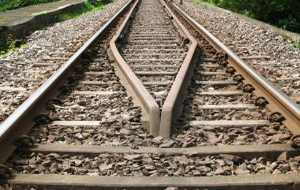

CDPQ Infra, a subsidiary of Caisse de dépôt et placement du Québec, has proposed a 67-kilometre electric light-rail transit system for the Greater Montréal area that would feature downtown and airport stops. The project’s estimated cost is $5.5 billion, of which Caisse is willing to commit $3 billion.
It could become a reality if Québec and the federal government agree to co-invest with CDPQ Infra.
“Based on the technology, frequency, [and] speed, people will be able to move faster than today and more often,” said Michael Sabia, the Caisse’s president and chief executive officer, speaking at a press conference in Montreal on Friday.
“That [project] delivers the goods,” he added, explaining that it would provide an alternative to driving and help ease traffic congestion in the Greater Montréal area.
Read: Caisse announces organizational shakeup
The light-rail network would have 24 stations, linking downtown Montreal, Montréal–Pierre Elliott Trudeau International Airport and the suburbs of the South Shore and the West Island. It would operate every day from 5 am to 1 am.
But some reporters expressed concern that the proposed route could mean a detour for passengers trying to get to key areas, such as the airport.
“Don’t be misled by a map,” Sabia said, reiterating that due to the speed and frequency of the trains, passengers would still be able to move efficiently. Another option would have been to create an underground network, but that wouldn’t work for the Caisse, he said. “Building tunnels is expensive, really expensive. To do that makes this project certainty not viable from our point of view.”
Another issue raised by reporters was the scarcity of parking spots in the areas the network would cover. Creating additional parking is something the creators of the project will work on with the various municipalities involved, said Macky Tall, president and chief executive officer of CDPQ Infra.
If the project gets the green light, construction is expected to begin in the spring of 2017, with the first trains running at the end of 2020. It would be the largest infrastructure project for Montréal since the creation of the metro in 1966.
The undertaking could inject more than $3 billion into Quebec’s economy over the next four years, according to the Caisse. During the four-year construction phase, the project would likely produce 7,500 direct and indirect jobs annually as well as at least 1,000 permanent jobs once it becomes operational.
If completed, it would be the world’s third largest automated transportation system after Dubai (80 kilometres) and Vancouver (68 kilometres). It would also reduce greenhouse gas emissions by 16,800 tonnes annually, Caisse estimates.
CDPQ Infra, which was created almost a year ago, will start a consultation process in the coming weeks. It plans to submit the project to the environmental impact public hearing process at the end of the summer.
